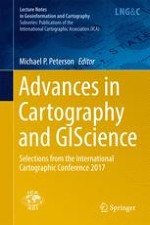2017 | OriginalPaper | Buchkapitel
How Hard Is It to Design Maps for Beginners, Intermediates and Experts?
verfasst von : Gáspár Albert, Virág Ilyés, Csaba Szigeti, Dávid Kis, Dávid Várkonyi
Erschienen in: Advances in Cartography and GIScience
Aktivieren Sie unsere intelligente Suche, um passende Fachinhalte oder Patente zu finden.
Wählen Sie Textabschnitte aus um mit Künstlicher Intelligenz passenden Patente zu finden. powered by
Markieren Sie Textabschnitte, um KI-gestützt weitere passende Inhalte zu finden. powered by
